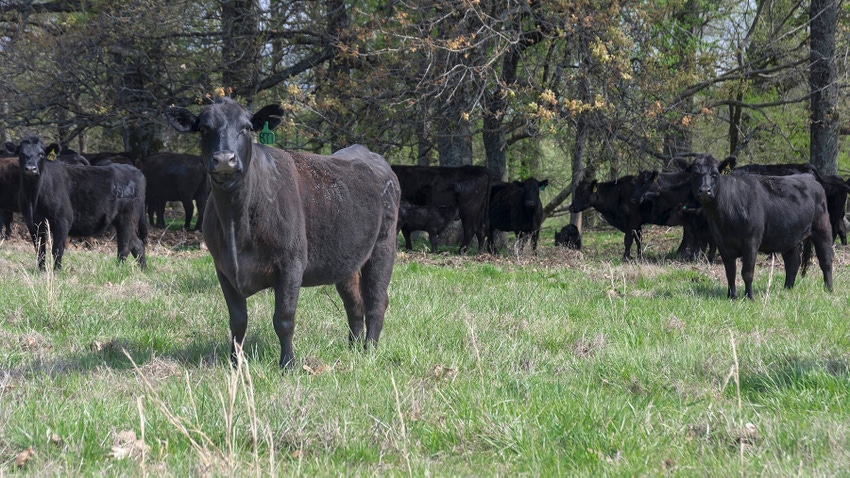May 26, 2023

Mississippi cattle operations must constantly improve efficiency to remain profitable, as rising production costs are decreasing the benefit of high market prices.
Brandi Karisch, beef specialist with the Mississippi State University Extension Service, said beef production is a significant component of the state’s agricultural economy, with a total estimated value of $318 million in 2022.
“Mississippi producers face similar challenges to those in many other states, as costs for feed, fuel and fertilizer for pastures continue to be high or rise,” Karisch said.
Rocky Lemus, Extension forage specialist, said the state’s beef industry is supported by the 2.6 million acres of forage production across the state, including about 600,000 acres in hay production.
“Although forage should be the foundation of livestock production, some limitations such as limited rotational grazing and farm forage diversification require hay supplementation for 90 to 110 days in the year,” Lemus said.
Managed grazing
This demand from the beef cattle industry puts pressures on the state’s pastures to provide sufficient, high-quality forage. Lemus said producers can reduce the need for supplementation if they implement more efficient rotational grazing systems rather than overgrazing and allowing weeds to become a barrier to forage utilization and return.
“Pasture cost has increased by 20% to 30% in the last five years due to the increase in fertilizer costs,” Lemus said. “We cannot afford to continue adding fertilizers based on guesses. Start with a soil sample to determine pH and nutrient levels, and add fertilizer based on those recommendations.
“This year, we are seeing a decline in fertilizer prices, and producers should take advantage of this cost reduction to develop a nutrient management plan that is efficient and sustainable,” he said.
The MSU Forage Extension Program works closely with county Extension offices across the state to provide tools and recommendations for producers.
“Our goals and objectives are to help producers to be more sustainable by developing grazing and nutrient management plans that could enhance forage quality and production,” Lemus said.
Grazing delay
The hard freeze of December and the freeze in early March impacted cool-season annual grasses, such as oats, and caused a delay in the opportunity to graze annual ryegrass.
“We probably lost four to six weeks of grazing potential due to these conditions,” Lemus said. “We predict lower hay yield this summer season and the hay inventory to remain tight due to these conditions.”
Mississippi has just under 16,000 individual beef cattle operations in the state. Karisch said that, as of Jan. 1, these producers had 860,000 head of cattle, including 478,000 beef cows and 91,000 beef cow replacements. Scott, Jones, Tate, Hinds and Walthall counties lead the state with the number of beef cattle.
State cattle producers are heavily involved in stocker cattle production, raising more than 400,000 head of stocker cattle in the state each year.
“We have noted a decline in cattle numbers the past few years due to many factors, and this is reflected in the decreased number of beef cows found this year compared to last,” Karisch said.
Locally grown demand
There is a large and growing group of consumers who seek locally raised beef and are willing to pay a premium for meat products from a known source. Karisch said farmers markets and social media groups are great ways to connect with local farmers and learn where food comes from.
“Cattle producers offer locally raised beef in all parts of the state,” she said. “There are a multitude of options for consumers to buy a half or whole beef or bundles and individual cuts.
“Many producers are seeking out USDA-inspected facilities with individual labels that allow them to market to consumers who might not have the freezer space or cash flow for purchasing a whole or half beef,” Karisch said.
The Mississippi Department of Agriculture and Commerce offers resources through the Genuine Mississippi program that allows consumers to find cattle producers who have their farms listed through that program.
“Cattle producers love to share their story of how that beef was grown and raised on their farm, and I encourage consumers to seek them out and enjoy locally raised beef,” Karisch said.
MSU Extension supports the beef cattle industry by providing science-based solutions to cattle producers in Mississippi through educational workshops, online resources and publications, and one-on-one assistance.
“Our goal is to serve as a knowledge resource for every level of producer, from those just getting started in the cattle industry to the producer who has owned cattle for 60 years,” she said.
To learn what to expect when purchasing shares of locally produced beef, view Extension Publication 3489, “How Much Meat to Expect from a Beef Animal: Farm-Direct Beef,” at http://extension.msstate.edu/publications/how-much-meat-expect-beef-animal-farm-direct-beef.
About the Author(s)
You May Also Like






